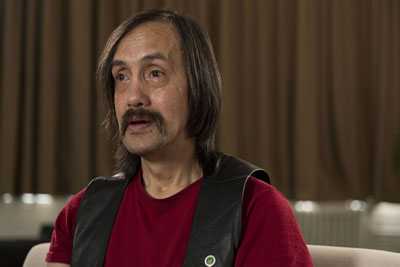
CDC’s Tips from Former Smokers Campaign Airing a New Round of Hard-Hitting Commercials

The Centers for Disease Control and Prevention (CDC) is continuing its national tobacco education campaign — Tips From Former Smokers (Tips) — with hard-hitting TV commercials that feature real people who have experienced the harms caused by smoking. The campaign ads, which air beginning in late March 2020, will again highlight the immediate and long-term damage caused by smoking, and encourage people who smoke to quit.
Cigarette smoking is more common among American Indian/Alaska Native (AI/AN) adults than most other racial/ethnic groups in the United States. Although cigarette smoking prevalence in the general population has declined in recent years, prevalence among the AI/AN population remains high. In 2018, more than 1 in 5 (22.6%) AI/AN adults in the United States smoked cigarettes, compared with about 1 in 7 (13.7%) U.S. adults overall.
Two Native Americans, Michael P. and Nathan M., are featured in CDC’s Tips campaign. They both hoped that by sharing their stories, they could help other AI/AN smokers to quit.
Michael, a member of the Tlingit tribe in Alaska, tried his first cigarette at the age of 9, then smoked for most of his adult life. He was diagnosed with chronic obstructive pulmonary disease (COPD) at age 44, but ignored the symptoms until age 52, when he awoke one day gasping for air. He quit smoking that day.
Michael had the diseased parts of his lungs removed to make breathing easier, but his doctor said that Michael needed a lung transplant. “I used to play volleyball and hike int he mountains, but I don’t do that anymore,” he said. “I avoid anything that involves running and carrying things. I stay away from smoke and exhaust. Now, it’s alla bout friends, good memories, and living a little bit longer.” Michael died in 2020 at the age of 64.
Nathan, a Native American and member of the Oglala Sioux tribe, never smoked cigarettes, but for about 11 years he worked at a casino that allowed smoking. The exposure to secondhand smoke triggered asthma attacks and caused him to develop serious infections that eventually led to permanent lung damage called bronchiectasis.
“A common cold escalated into pneumonia, sending me to the emergency room,” he said. “During one of the visits, a doctor was looking at x-rays of my lungs and commented that I had the lungs of a heavy smoker. I told him, ‘I never smoked a day in my life!'”
His lung problems were so serious that Nathan finally had to leave his job to avoid the smoke. He would run out of breath just walking a short distance and had to use oxygen daily. Sadly, Nathan’s lung damage led to his death in October 2013. He was 54.
CDC launched the first Tips campaign in 2012 to lower smoking rates and save lives, and the campaign has been very successful since then. Results of a recent study show that from 2012-2018, CDC estimates that more than 16.4 million people who smoke have attempted to quit and approximately one million have successfully quit because of the Tips campaign.
“Most people who smoke want to quit. The don’t want to suffer or be a burden on their families,” said Corinne Graffunder, DrPH, MPH, director of CDC’s Office on Smoking and Health. “By showing how real people and their families are affected by smoking-related diseases, the Tips campaign can help motivate people to quit for good.”
For more information about the Tips campaign and resources for quitting smoking, visit CDC.gov/tips. For help quitting, call 1-800-QUIT-NOW (1-800-784-8669).